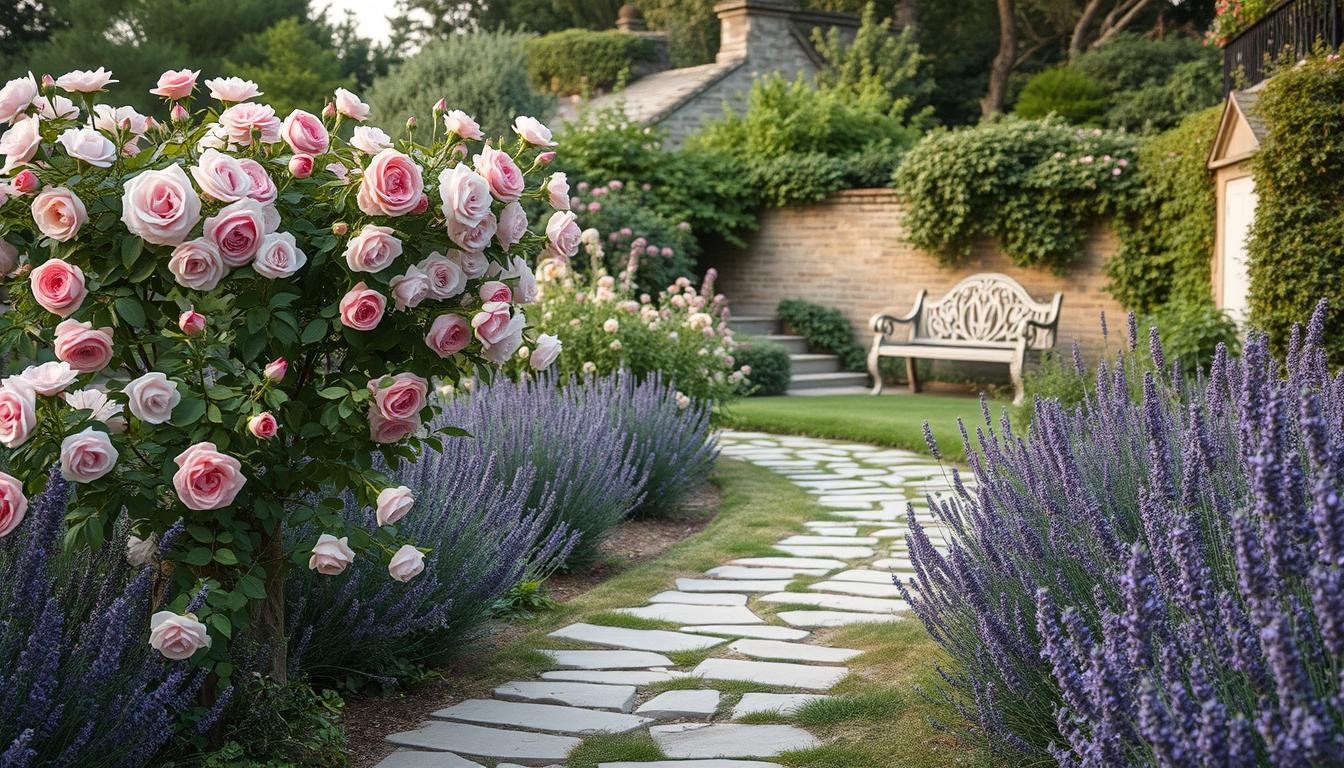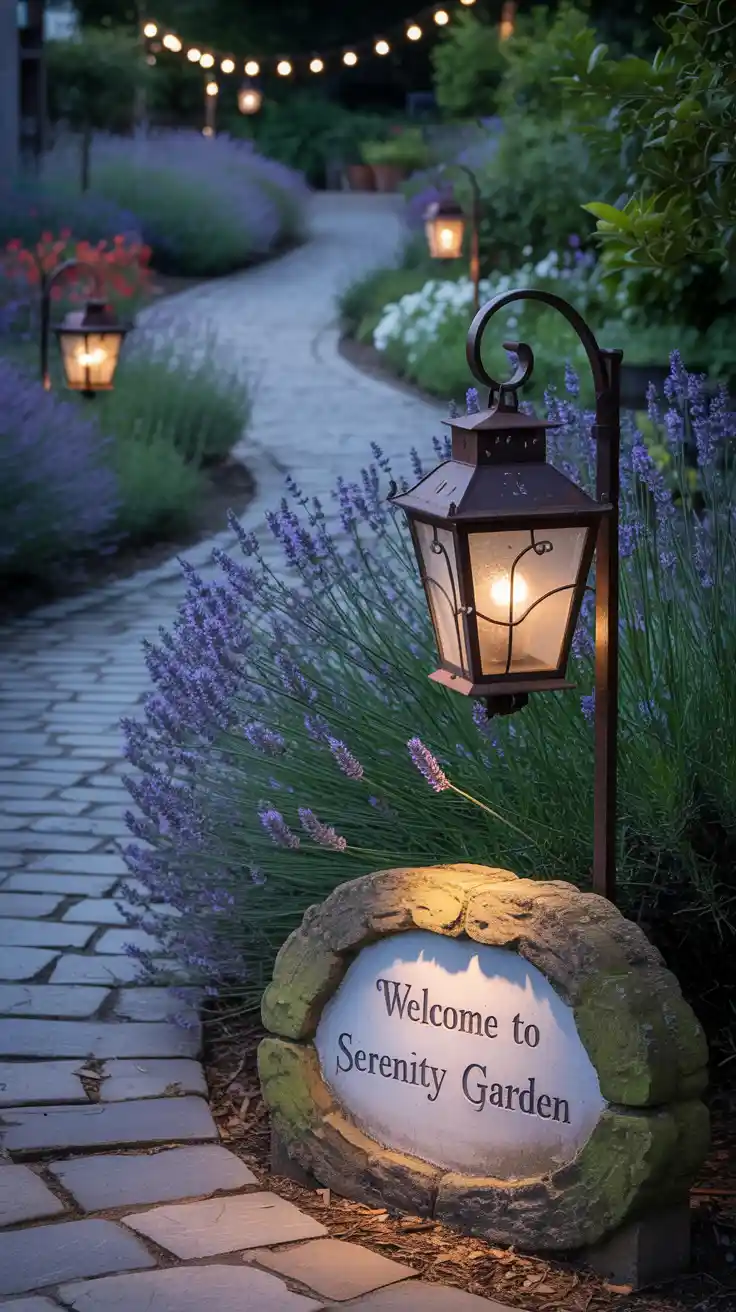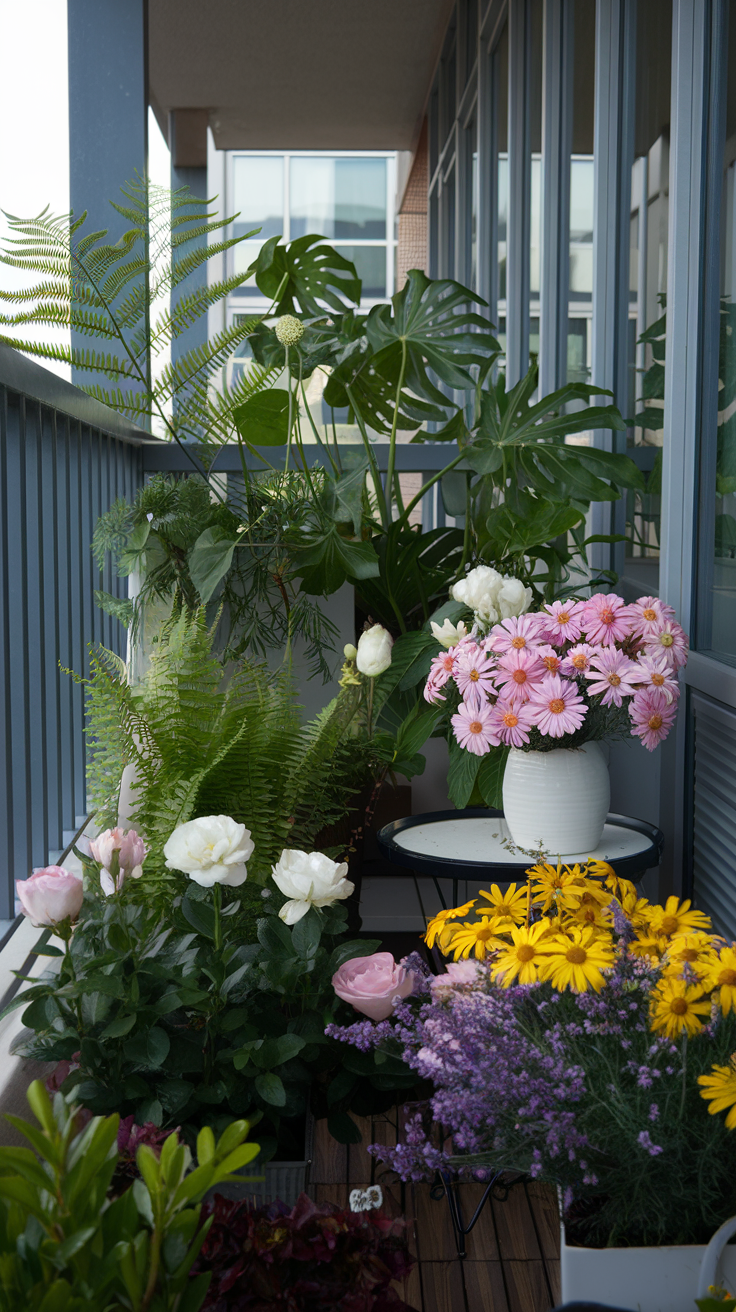How to Turn Your Backyard into a Vintage English Garden
Planning Your Vintage English Garden
The charm of a vintage English garden lies in its thoughtful design that appears effortlessly natural. Before you start planting, take time to envision your space and create a cohesive plan that honors traditional English garden principles.
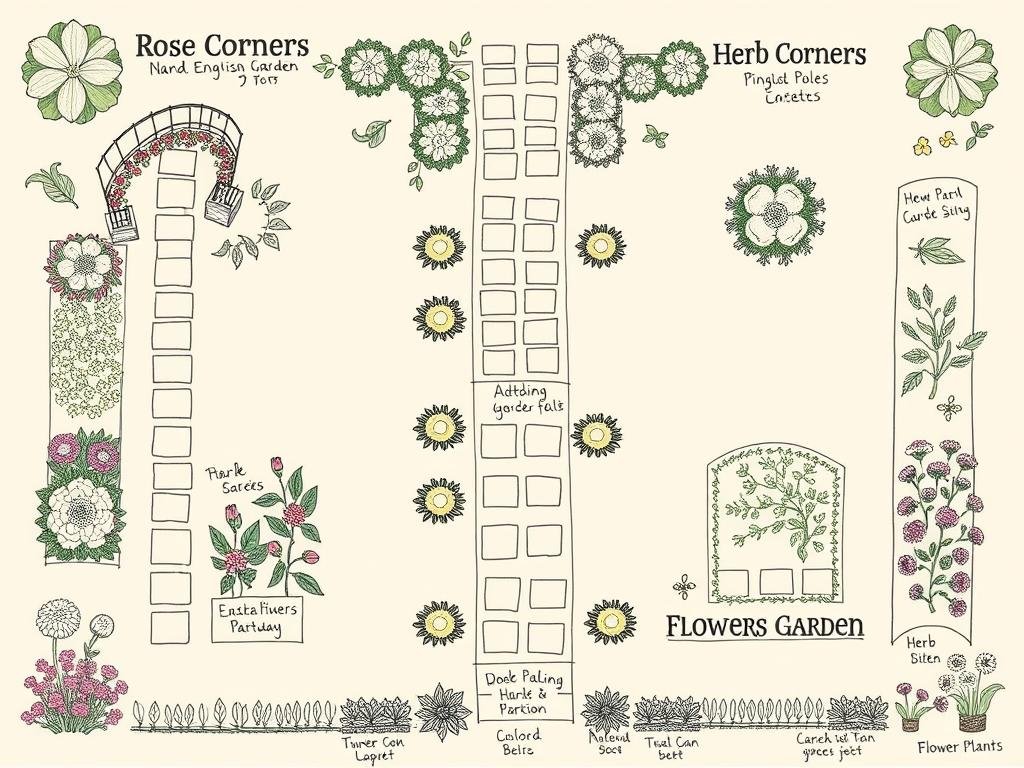
Symmetry & Structure
Traditional English gardens balance formal structure with natural growth. Consider creating symmetrical pathways that lead to a focal point like a birdbath or sundial. This provides the backbone for your garden while allowing plants to soften the edges.
Garden Rooms
Divide your space into “rooms” using hedges, trellises, or rose arches. Each area can have its own character—perhaps a herb garden in one section, a rose collection in another, and a peaceful seating area elsewhere.
Vertical Elements
Incorporate height with climbing plants, trellises, and arches. These vertical elements create visual interest and frame views throughout the garden, inviting exploration and discovery.
Ready to start planning?
Download our free Vintage Garden Planning Template to map out your perfect space.
Essential Plants for an Authentic Vintage English Garden
The soul of any English garden lies in its carefully selected plantings. Traditional varieties offer not just beauty but often delightful fragrance and historical significance. Here are the must-have plants to achieve that authentic vintage feel.
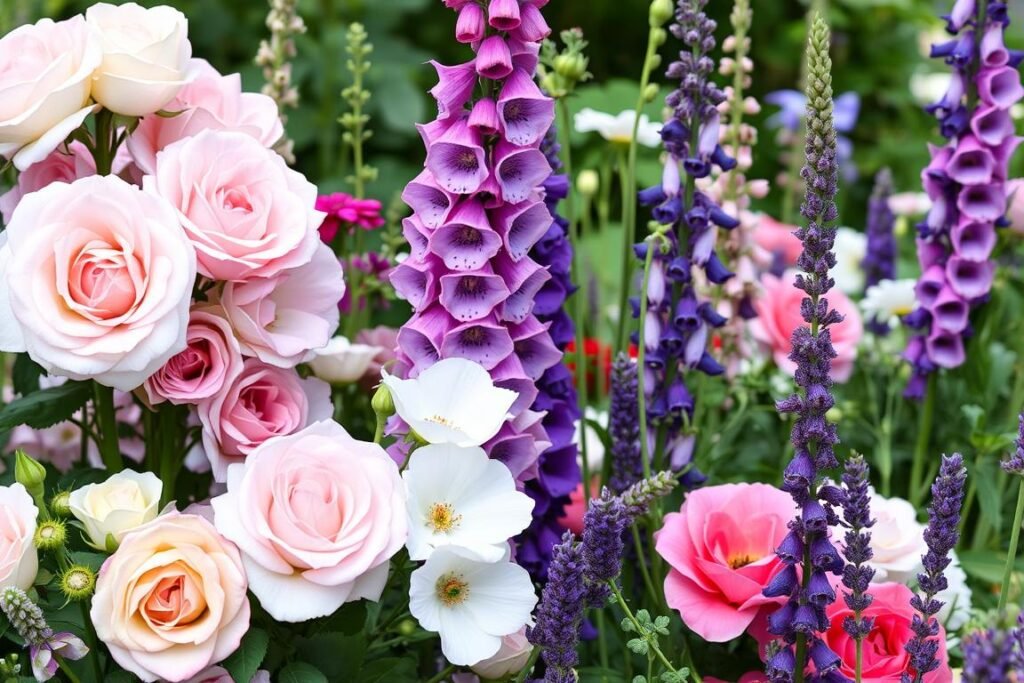
**5 Must-Have Plants for Authenticity**
Roses
No English garden is complete without roses. Choose heritage varieties like ‘Gertrude Jekyll’, ‘Graham Thomas’, or ‘Mary Rose’ for authentic charm. These old-fashioned roses offer incredible fragrance and that quintessential romantic appearance.
Lavender
Plant lavender along pathways where its fragrance will be released as visitors brush past. English lavender (Lavandula angustifolia) varieties like ‘Munstead’ and ‘Hidcote’ are particularly well-suited to the English garden aesthetic.
Hollyhocks
These tall, stately flowers bring vertical interest and cottage charm. Plant them against walls or fences where their towering spires can create dramatic backdrops for lower-growing plants.
Foxgloves
With their speckled, bell-shaped flowers on tall stems, foxgloves add height and whimsy. They self-seed readily, creating that slightly wild, established look that’s essential to vintage gardens.
Delphinium
These magnificent spires of blue, purple, pink, or white flowers create stunning vertical accents. Plant them in groups of three or five for maximum impact, and provide staking to support their tall stems.
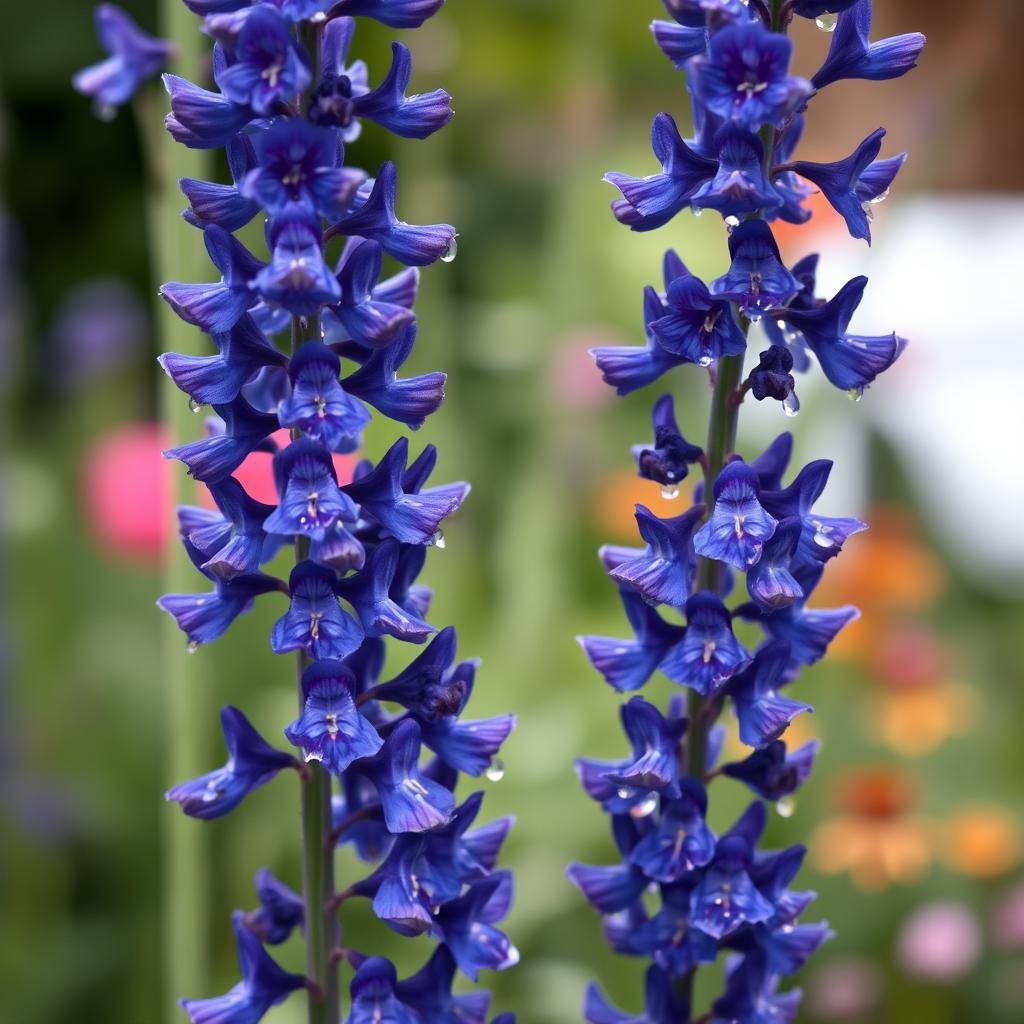
“In a vintage English garden, plants should be allowed to spill over paths and intermingle with their neighbors. This controlled chaos is what gives these gardens their romantic, lived-in appeal.”
Additional Classic English Garden Plants
- Peonies – sumptuous blooms with incredible fragrance
- Lupines – tall spires in a rainbow of colors
- Forget-me-nots – delicate blue flowers for ground cover
- English Daisies – charming, low-growing perennials
- Lily of the Valley – fragrant, bell-shaped white flowers
- Bleeding Heart – uniquely shaped pendulous flowers
Vintage Garden Inspiration
Pin this plant guide to your gardening board for future reference!
Adding Vintage Décor Elements
The right decorative touches transform a simple garden into an authentic vintage retreat. These elements add character, history, and focal points that enhance the overall experience of your English garden.
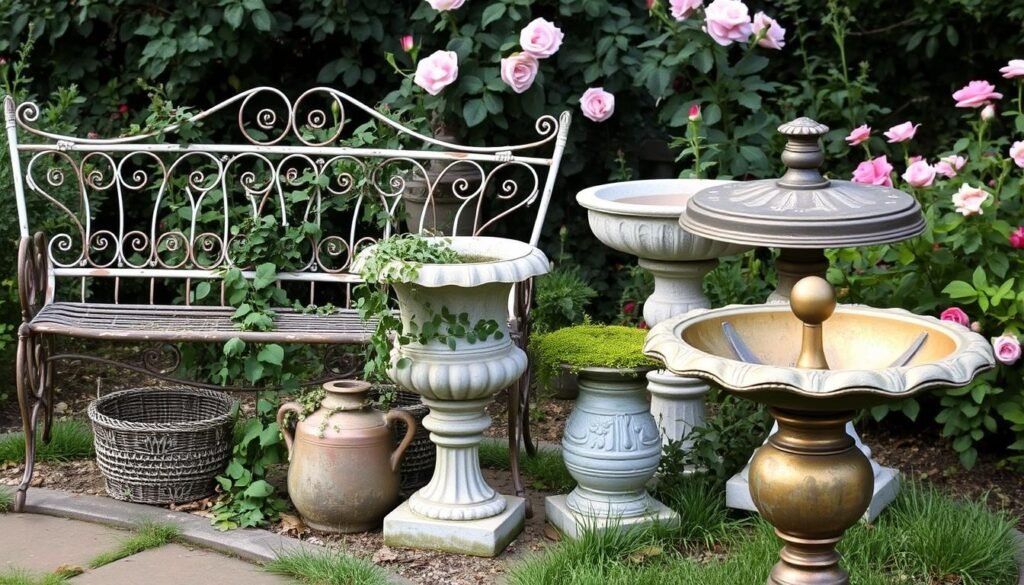
Weathered Seating
A wrought-iron bench or weathered wooden seat provides both function and charm. Position seating to take advantage of garden views or fragrant plantings. Allow climbing roses or clematis to ramble nearby for that perfect English garden moment.
Antique Containers
Look for aged terracotta pots, stone urns, or vintage metal containers. Even if newly purchased, you can accelerate aging by applying yogurt or buttermilk to encourage moss growth, or use special paint techniques to create a time-worn patina.
Garden Ornaments
Incorporate classic elements like sundials, birdbaths, or small statuary. These should appear as though they’ve been in place for generations. Place them where they’ll be discovered gradually as one explores the garden.
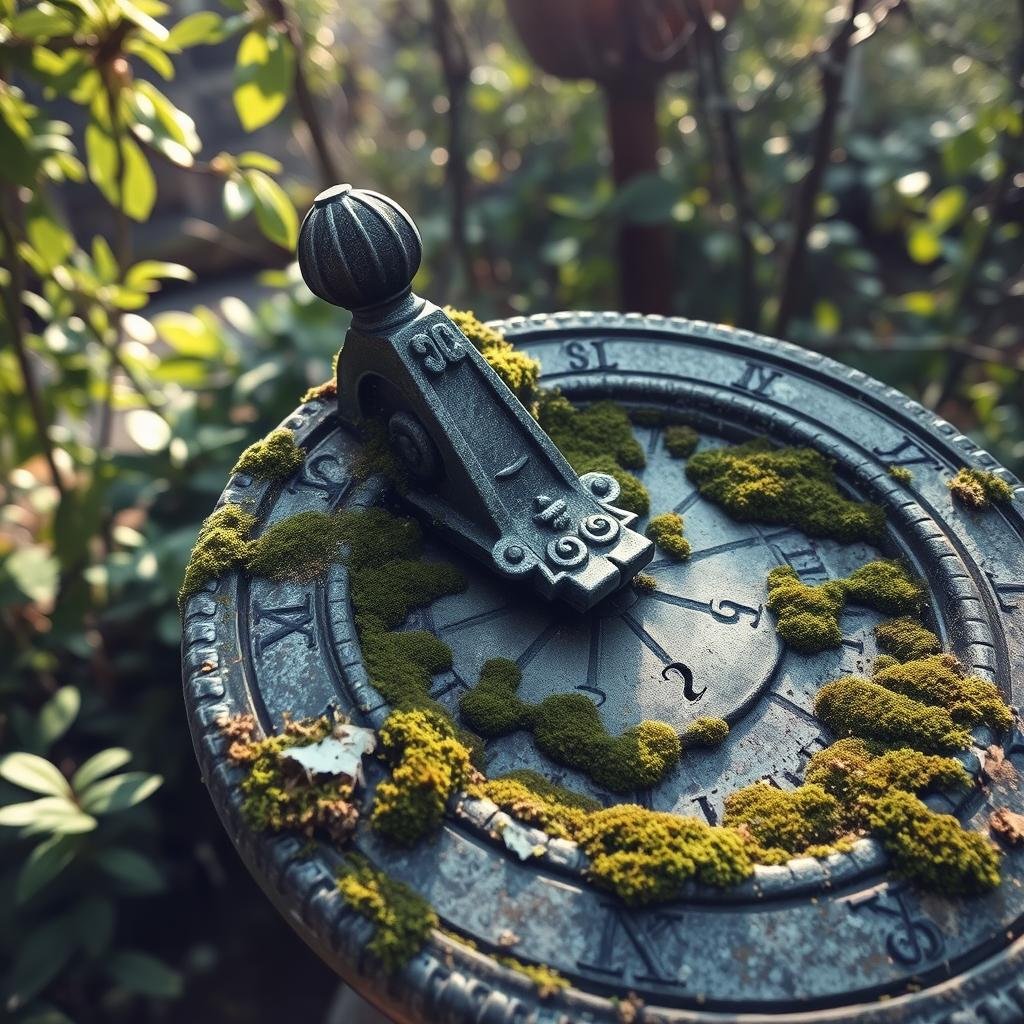
Vintage Garden Treasure Hunting
Find authentic garden décor at estate sales, antique shops, and flea markets. Look for items with patina and character that tell a story. Even damaged pieces can find new life in the garden—a chipped urn becomes perfect for trailing ivy, while an old ladder transforms into a charming plant stand.
Creating Authentic Pathways & Lawn Areas
The way you move through a garden significantly impacts the experience. In a vintage English garden, pathways should invite wandering and discovery while maintaining a sense of purpose and design.
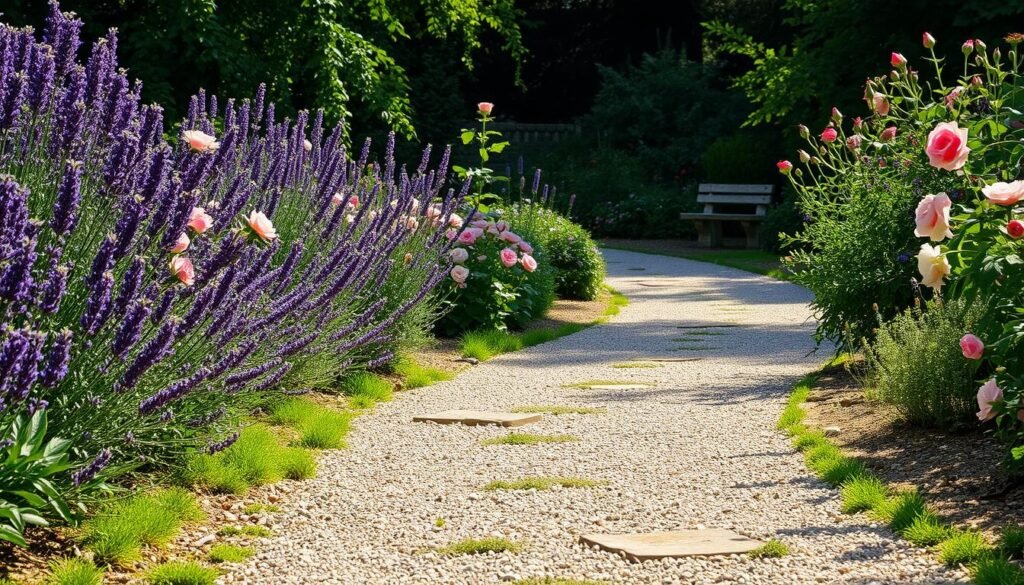
Pathway Materials
For authentic charm, consider these traditional options:
- Gravel – Creates a satisfying crunch underfoot and allows rainwater to drain naturally
- Flagstone – Irregular pieces laid with small gaps for plants to grow between
- Brick – Laid in herringbone or basket weave patterns for visual interest
- Stepping stones – Set among low-growing ground covers like thyme or chamomile
Allow plants to spill slightly onto pathways—a few lavender blooms nodding over a gravel edge or thyme growing between stepping stones adds to the romantic, established feel.
The Perfect Lawn
While modern gardens might showcase perfect, manicured lawns, vintage English gardens typically feature smaller, more natural grass areas. Consider:
- Creating a small, central lawn as a calm counterpoint to busy planting areas
- Embracing a slightly longer cut for a softer, more natural appearance
- Allowing small flowering “weeds” like clover or English daisies to bloom
- Defining lawn edges with gentle curves rather than straight lines
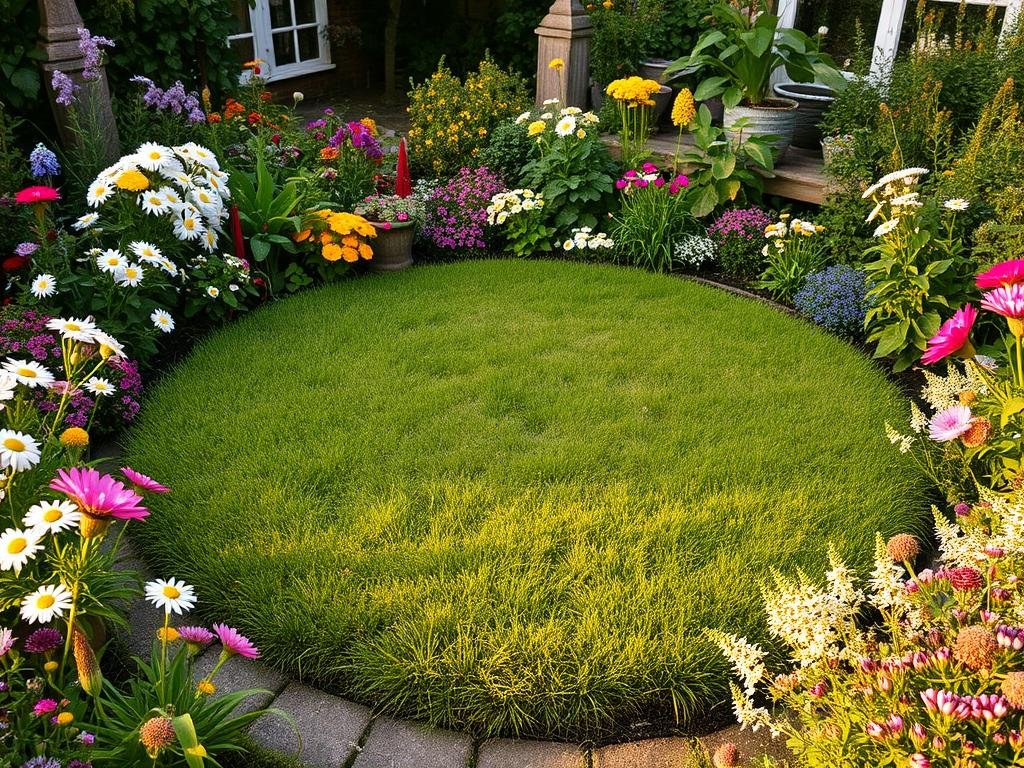
Maintaining Your Vintage English Garden
The beauty of a vintage English garden lies in its slightly untamed appearance—but achieving this look actually requires thoughtful maintenance. The goal is “controlled wildness” rather than true neglect.
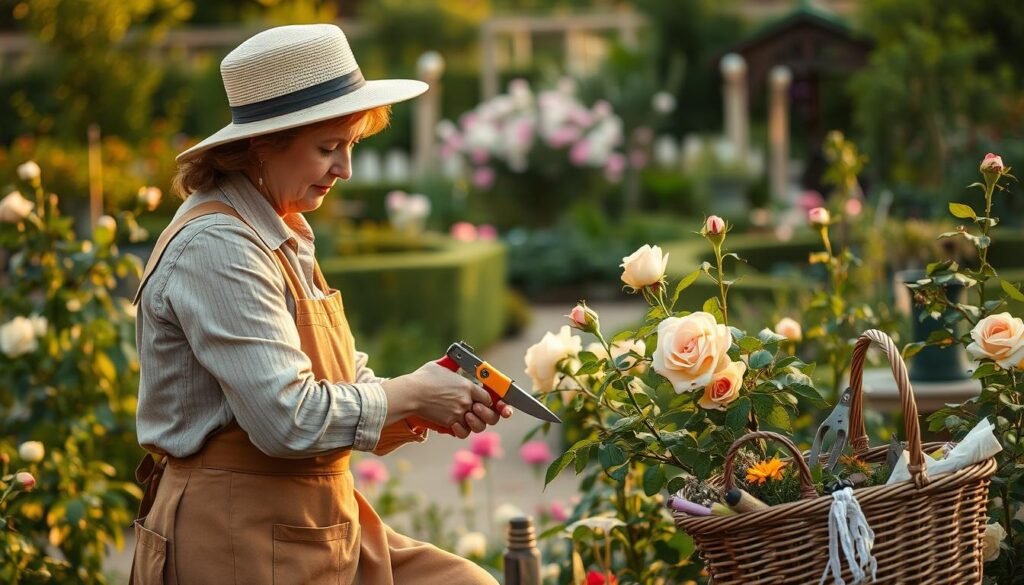
Seasonal Pruning
Rather than constant trimming, vintage gardens benefit from strategic seasonal pruning. Cut back perennials in late winter, shape shrubs after flowering, and deadhead throughout the growing season to encourage more blooms.
Allow seed heads to remain on plants like echinacea and alliums in fall—they provide winter interest and food for birds.
Natural Pest Control
Embrace traditional, gentle approaches to garden care. Encourage beneficial insects by planting diverse flowers, use companion planting strategies, and accept that a few holes in leaves are part of a natural garden’s charm.
Consider classic solutions like soap sprays for aphids or hand-picking larger pests rather than reaching for chemical options.
Embracing Patina
Allow garden elements to age gracefully. A light coating of moss on stone features, weathered wood, and the natural aging of metal adds to the vintage appeal. Clean structures when necessary for safety, but don’t be too quick to power-wash away the character that time provides.
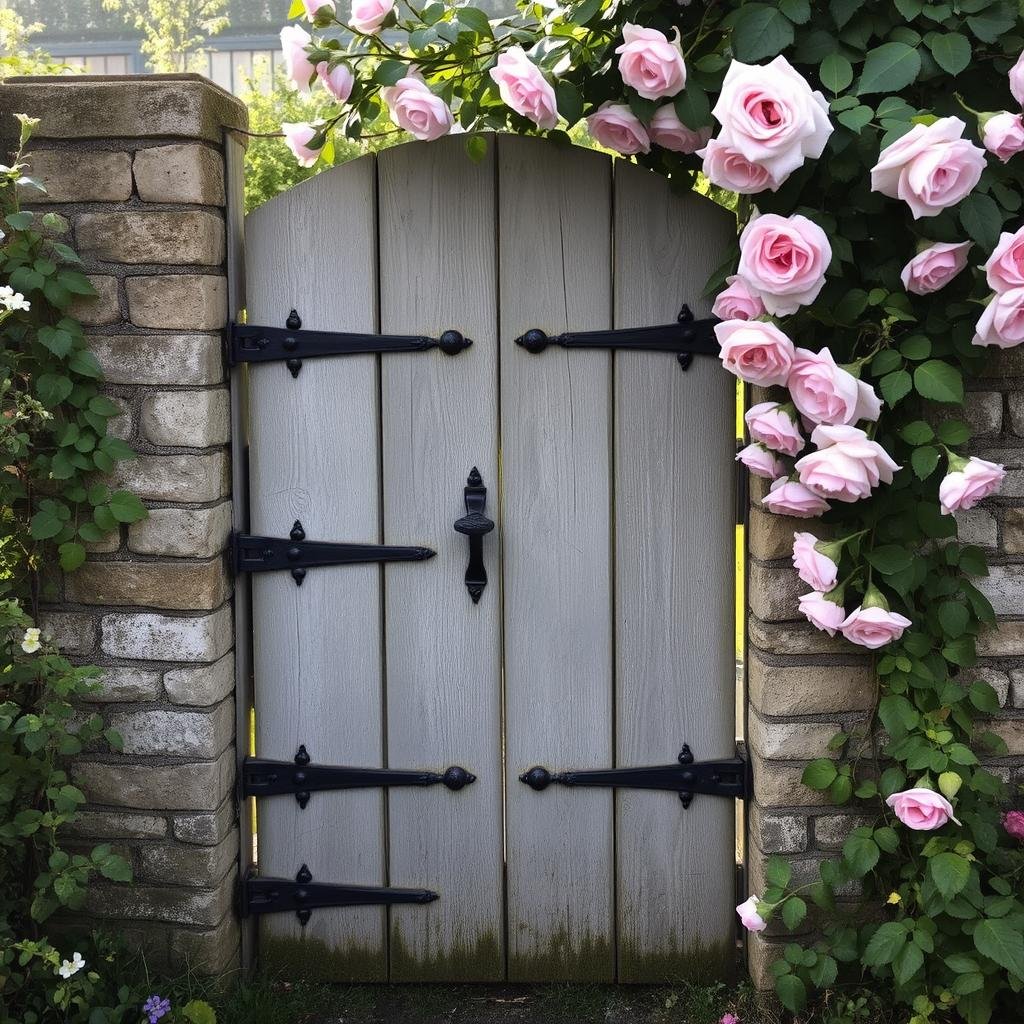
How often should I water my vintage English garden?
Traditional English gardens typically rely on rainfall once established. Deep, infrequent watering is better than frequent light sprinkles, as it encourages deeper root growth. Focus extra attention on new plantings and during exceptional dry periods. Consider installing a rain barrel to capture water—a practice that aligns with the sustainable approach of traditional gardening.
When is the best time to start a vintage English garden?
Fall or early spring are ideal times to begin. Fall planting allows perennials and shrubs to establish roots before summer heat, while spring planting gives you immediate gratification as the garden season unfolds. Start with structural elements and a few key plants, then add more over time—this gradual approach contributes to the layered, evolved look of a true vintage garden.
Seasonal Highlights in Your Vintage Garden
A well-designed English garden offers interest throughout the year. Plan your plantings to ensure there’s always something to enjoy, regardless of the season.
| Season | Featured Plants | Garden Tasks | Special Touches |
| Spring | Daffodils, tulips, forget-me-nots, cherry blossoms | Divide perennials, edge beds, apply compost | Place potted primroses near seating areas |
| Summer | Roses, lavender, delphiniums, foxgloves | Deadhead regularly, stake tall plants, light pruning | Set up afternoon tea in the garden |
| Fall | Dahlias, asters, Japanese anemones, autumn foliage | Collect seeds, plant spring bulbs, light cutbacks | Gather seed heads for dried arrangements |
| Winter | Hellebores, witch hazel, snowdrops, evergreen structure | Major pruning, plan for spring, clean tools | Add bird feeders to bring life to the winter garden |
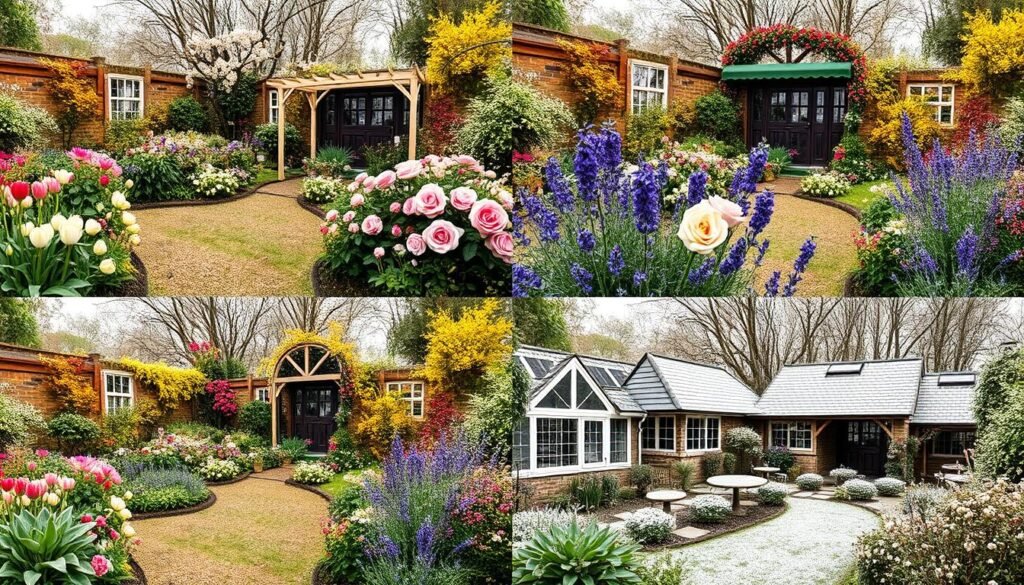
Your Vintage English Garden Journey
Creating a vintage English garden is more than just a landscaping project—it’s an ongoing relationship with your outdoor space. Each season brings new discoveries, challenges, and rewards as your garden matures and evolves.
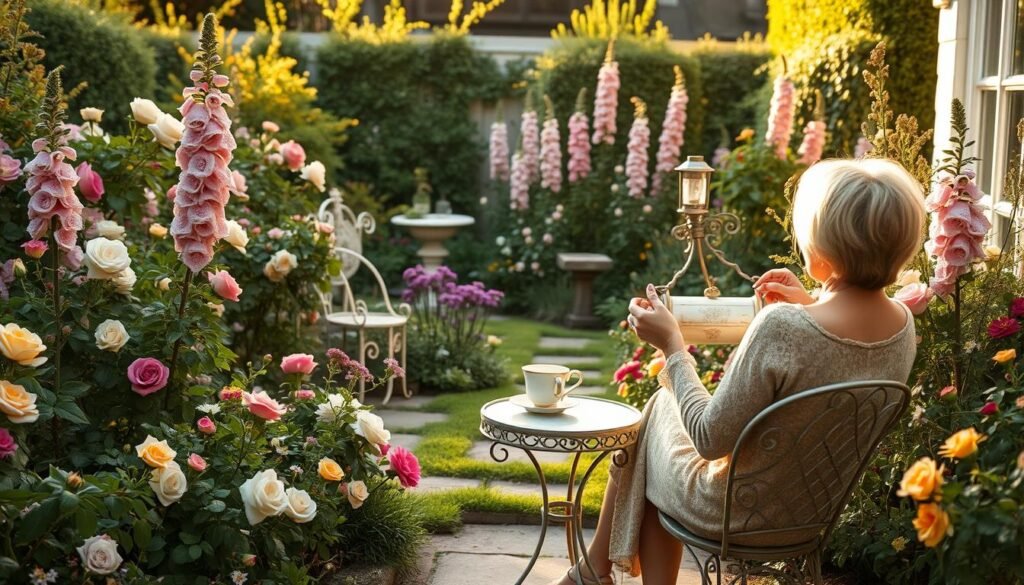
Remember that the most charming English gardens weren’t created overnight. They developed over years, with plants establishing themselves, self-seeding in unexpected places, and creating natural combinations that no designer could have planned. Embrace this organic process and allow your garden to surprise you.
